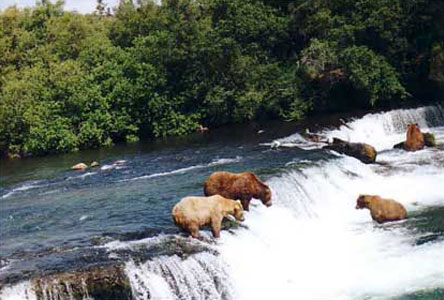
Crabs do often eat the remains of dead animals, which makes them scavengers. Invertebrates are animals that do not have backbones, such as a mollusk or an arthropod. Bacteria are microscopic, single-celled microbes, that make up the majority of decomposers as a whole. Hyenas are carnivores and can not be considered as decomposers and feed by hunting the living animals. Which one is not an example of a decomposer?įungi, bacteria, earthworm and dung beetles feed on decaying matter and serve as decomposers. Deer, grasshoppers, and rabbits are all consumers. Herbivores are consumers because they eat plants to survive. Which animals are consumers?Īnimals that eat only plants are called herbivores. These organisms are called producers because they produce their own food. Plants and algae (plant-like organisms that live in water) are able to make their own food using energy from the sun. They break apart dead organisms into simpler inorganic materials, making nutrients available to primary producers. What is a decomposer in a food chain?ĭecomposers play a critical role in the flow of energy through an ecosystem. However, fish and meat are important sources of protein and fat, though most non-coastal bears rely on carrion (including winter-killed animals). Plant foods make up the majority of a bear’s diet – sometimes as much as 90 per cent. They’re found throughout North America, South America, Europe, and Asia. They can be as small as four feet long and about 60 pounds (the sun bear) to as big as eight feet long and more than a thousand pounds (the polar bear). What kind of animal is bear?īears are mammals that belong to the family Ursidae. What is a brown bears food chain? Are all bears herbivores?īears are generally omnivorous, but dietary preferences range from seals for the entirely carnivorous polar bear to assorted vegetation for the largely herbivorous spectacled bear (Tremarctos ornatus). Secondary consumers are organisms that get their energy from primary consumers and producers and provide energy for tertiary consumers. The secondary consumers of Yellowstone are osprey, bald eagles, bighorn sheep, grizzly bears, coyotes, red-tailed hawks, and bison. What is a bear in a food web?īears are the end of the food. The adult bears are too aggressive and dangerous to prey on – obviously a reason they are at the top of the food chain. Tigers, wolves, cougars, bobcats, coyotes, and humans eat bears, but these predators only focus on bear cubs rather than adult bears. They are at the very top of the food pyramid because they are the tertiary consumers. … What type of consumer is a black bear?īlack bears are omnivores, which means they eat plants and other animals. Bears are omnivores, meaning they get their energy from both producers and other consumers.

Is a grizzly bear a producer consumer or decomposer?īears play the role of consumer in a forest ecosystem. Earthworms digest rotting plants, animal matter, fungi, and bacteria as they swallow soil. There are many invertebrate decomposers, the most common are worms, flies, millipedes, and sow bugs (woodlice). The ones that live on dead materials help break them down into nutrients which are returned to the soil. We use decomposers to restore the natural nutrient cycle through controlled composting. …ĭecomposers ( fungi, bacteria, invertebrates such as worms and insects) have the ability to break down dead organisms into smaller particles and create new compounds. Saprobes/wood decomposers | Image credit: Wikimedia.

To better explain this process, we have featured some of the best examples of decomposers that live in different ecosystems.

When a bear eats a plant-eating rodent, the bear is functioning as a secondary consumer. For example, when a bear eats berries, the bear is functioning as a primary consumer. Some organisms’ position in the food chain can vary as their diet differs. The primary difference is that bears have an elongated digestive tract, an adaptation that allows bears more efficient digestion of vegetation than other carnivores (Herrero 1985). Are bears omnivores?īears are omnivores that have relatively unspecialized digestive systems similar to those of carnivores. No because theyjust kill the things that they eat. What kind of consumer is the bear?īears and skunks are examples of omnivorous secondary consumers that both hunt prey and eat plants. Either way, animal decomposers keep down the dead matter of plant and animal waste to make room for new growth and regrowth in the ecosystem. Millipedes, termites, and earthworms, are animals that are classified as both decomposers and detritivores. In a forest community, black bears will eat blueberries, bugs, acorns, and many kinds of nuts. Black bears are omnivores and scavengers, like skunks and raccoons, which means that they will eat just about anything.


 0 kommentar(er)
0 kommentar(er)
